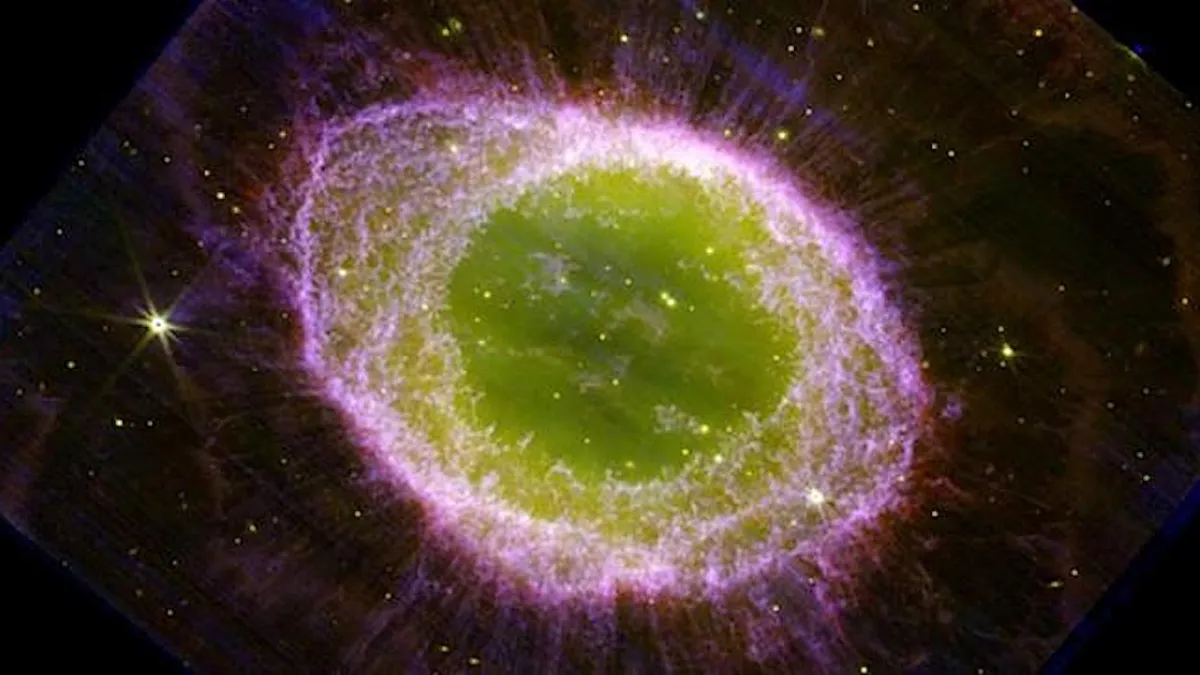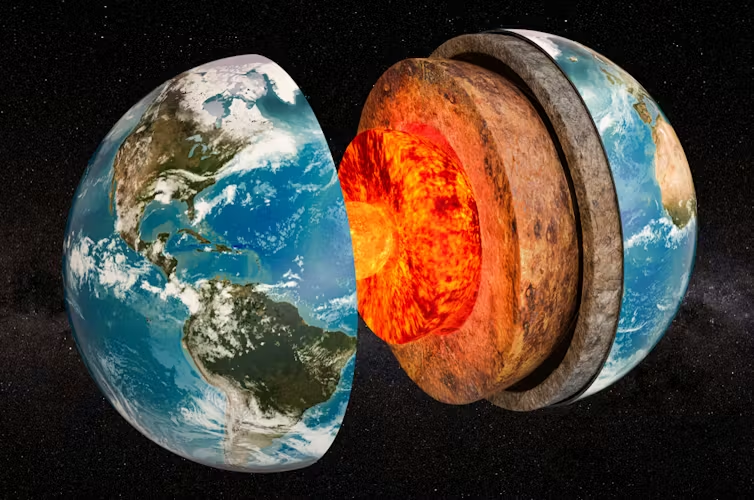The intricate structure of NGC 1514, a planetary nebula that has been forming for at least 4,000 years, has been made visible by NASA’s James Webb Space Telescope (JWST). The nebula’s rings now look as “fuzzy” clusters arranged in twisted patterns, visible only in infrared light. Where the faster materials are punched through is indicated by a network of sharper holes close to the center stars. The stars have a close, long orbit of nine years, and are surrounded by an orange arc of dust. One of these stars, which used to be several times as large as our Sun, was the main player in establishing this situation.
James Webb Space Telescope Reveals Dual Gas Rings Around Dying Star
The star’s interaction with its companion and stellar evolution are probably what gave the nebula its hourglass form. The two rings of the nebula are unevenly lighted by mid-infrared light, giving them a fuzzy or textured appearance and seeming more diffuse in the bottom left and top right. Particularly at the bubble or hole margins, oxygen was detected in the nebula’s clumped pink center. Because the expelled debris may have combined the orbits of the two central stars, inhibiting the production of complex molecules, NGC 1514 stands out for its deficiencies.
A press release claims that new photos from the James Webb Space Telescope (JWST) could help scientists study the final stages of a dying star. Two rings of expelled material produced by the primary stars trace the structure of NGC 1514, which is a Taurus constellation planetary nebula located 1,500 light-years from Earth. One uses gravitational pull for this as well. These rings offer a unique opportunity to study the complex interplay of star outflows over decades.
JWST Finds Clumped Gas and Oxygen in Binary Nebula System
According to previous studies, these two stars have one of the longest known nine-year orbits in the binary system among planetary systems. According to astronomers, the more massive of the two stars was primarily responsible for the nebula’s formation. As it became older, the star undoubtedly underwent rapid alteration, losing layers of gas and dust through its stellar wind to form a scorching, compact core known as a white dwarf. This white dwarf most likely produced very faint, almost perceptible in infrared light, clumped, filamentous rings as the quicker, weaker winds took away the older, slower-moving material.
While complex elements such as polycyclic aromatic hydrocarbons and carbon were remarkably rare, the JWST observations also detected oxygen in the nebula’s clumped pink core. Scientists are more eager than ever to get the equivalent of nine years’ worth of telescope observation time in a single year due to the significant demand for the $10 billion JWST.















